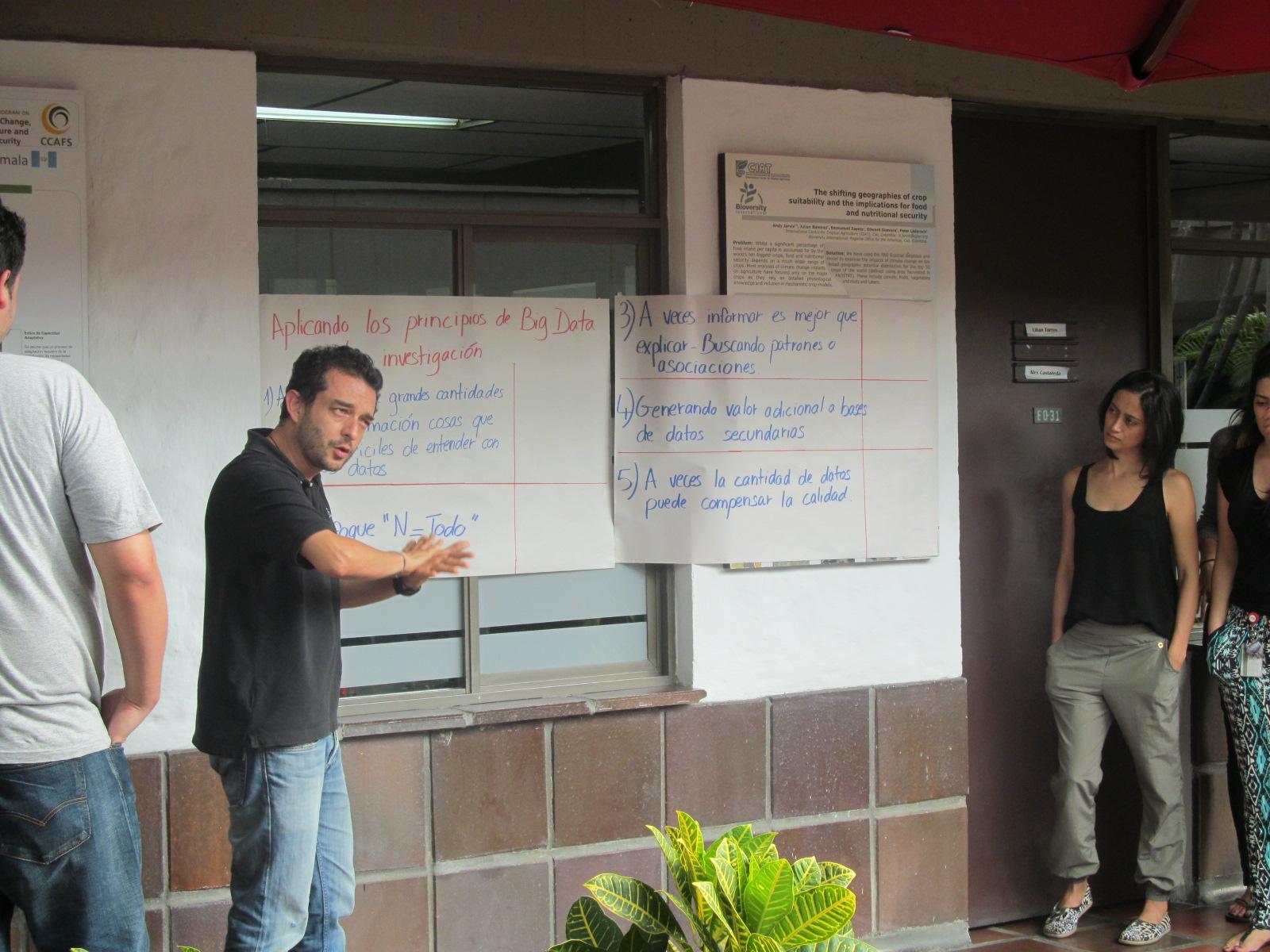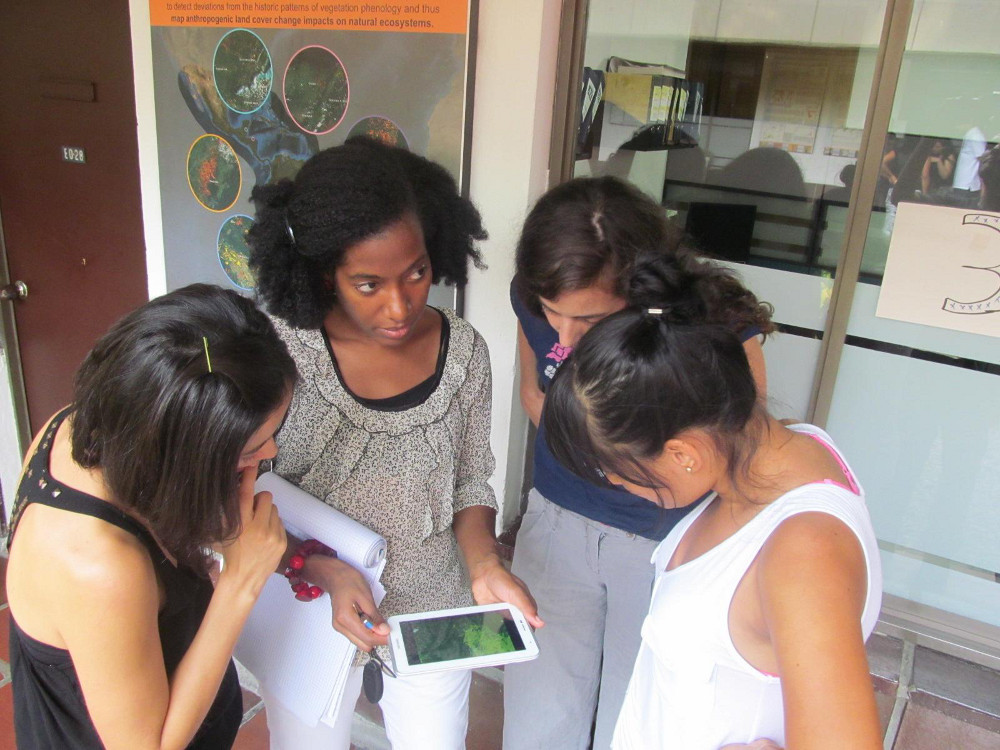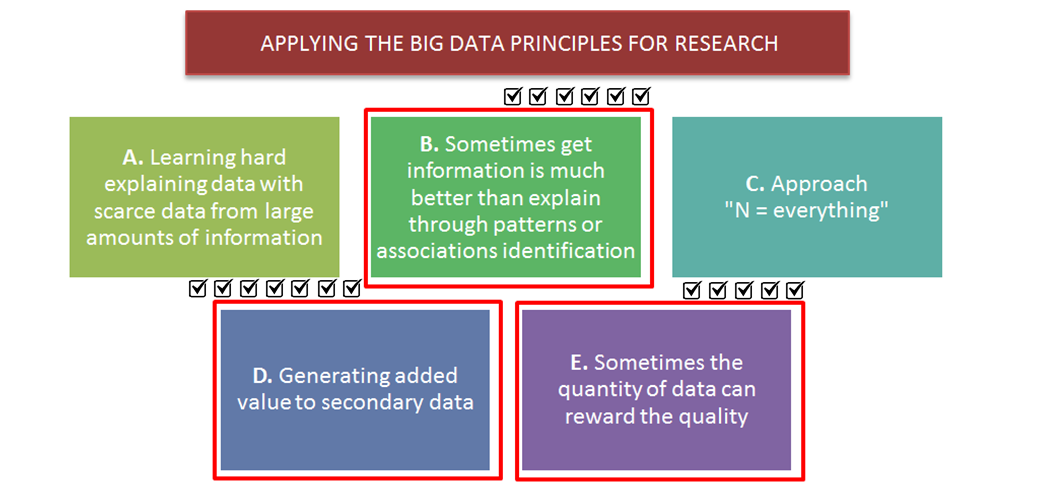

Last Friday, May 23, the recent Forest Defender game was presented during the “Happy Hour” held in the DAPA research area at CIAT. As a result, around 50 attendees experienced and linked the video game with some Big Data and crowdsourcing principles.

Figure 1 . Daniel Jiménez, Big Data/CIAT group leader.
The “Happy Hour” activity, this time organized by the CIAT-Big Data group, showcased the latest advances in Big Data research to DAPA staff (Figure 1). The main aim was to share some Big Data principles and relate them to the Forest Defenders videogame, which also incorporate concepts of crowdsourcing and satellite image interpretation to gather a validation dataset for the Terra-i monitoring system.
Previous start playing, a general explanation of the game settings was done, providing its description, objectives, input data and rules. Then, the participants, organized in ten groups to assigned each one a tablet, iterated and explored the video game, beginning with the stage 1, called “detecting differences” (Figure 2), where they explored a MODIS scene with two dates of difference between them. A second stage then continued, called “to defend forests”, where participants put in practice their abilities and skills for videogames. In this part, they had to prepare strategies to defend forests from enemies, using the available options to combat them (weapons and credits).

Figure 2. DAPA participants iterating at the stage 1 of the video game.
After few minutes of gaming, the participants began a discussion to identify which Big Data principles (Figure 3), mentioned at the beginning, were linked with the videogame logic. The identified principles were displayed on a poster board to summarize their opinions.
As result, three of six principles behind the videogame logic were identified by the attendees (Figure 3). Firstly, they justified principle B saying the Stage 1 changes were easily recognized with image interpretation. Justifying principle D, they stated the NDVI MODIS database play a fundamental role in the Terra-i data generation. The final principle, E, was argued according to the large quantity of satellite imagery allowing analyse more accurate possible of change detections related with deforestation.

Figure 3. Big Data principles applied to research. Red boxes refer to the principles identified by the participants. The number of checklist symbols indicates the number of groups that agreed on linking the principle with the video game.
In conclusion, Big Data concepts were successfully presented to the participants through an interactive and entertaining method. Complementing this activity, this blog post identifies further links between Big Data and the Forest defender video game principles as follows:
Links between Big Data principles and Forest defenders videogame
Principle A
Users are utilizing a large amount of processed satellite images covering the whole of Latin America and the Caribbean, which are stored on a server. Without being experts in satellite imagery interpretation, players are tasked with interpreting and identifying visible changes, such as deforestation. The goal is users figure out to distinguish a phenomenon from the interpretation of a range of images between two time periods (separated by 12 or 18 months). This learning and collection of large amount of data by experts, whose population in society may be smaller, is harder and also only limited to a certain number of images from different times and/or certain geographic region.
Principle B and E
Under the assumption that multiple players can interact with the same scene, patterns or trends can be gathered and identified when users focus on a same cell (the smallest area of analysis). This dataset allows to verify, with these selection patterns, whether the Terra-i data is accurate or not, or statistically known as "true positives") and "false positives", respectively. These statistics provide valuable information in which circumstances the Terra-i system may be failing and need a rigorous calibration.
Principle C
Users within this videogame are not performing analysis on a particular area but they are, without being aware of it, conducting a macro-level analysis of a region such as Latin America and the Caribbean.
Principle D
The video game uses previously processed images of NDVI MODIS data and Terra-i detections since 2004 until 2012. These data are free and continually updated, keeping the sustainability of the application. The application allows first identify the phenomenon of deforestation by two temporal MODIS NDVI images, and then validate this information throughout the Terra-i detections.
Principle E
The current information is stored on a server that also has a basic software that counts the clicks of the players on the NDVI MODIS images. In addition, after overlaying this information with the Terra-i detections, some basic statistics (counts) are calculated. As result, a large set of valuable information is gathered from many users, without requiring experts. This information is also relevant to analyze and use for calibration and improvement of the accuracy of the Terra-i outputs.
Complementing the Big Data concepts, this game has been also implemented under crowdsourcing approaches. In this way, based on working with a large amount of information structured in a video game format, it allows to perform data validation by a general community (collaborative work). In addition, new information generated could be used for posterior analysis.

The Terra-i team together with CRS El Salvador under the Raices project carried out a virtual workshop through the teams platform to technicians from the Ministry of Environment and Natural Resources, CARITAS, Universidad El Salvador, CENTA, about the Mapping of land cover using remote sensors and open source tools such as GEE, SEPAL and QGIS- Plugin Semi Automatic Classification.

Near real-time vegetation loss detection in Southwestern Ethiopia: calibration, validation, and implementation of the Terra-i system

The Alliance of Bioversity International and the International Center for Tropical Agriculture (CIAT) (the Alliance) conducted a training for local stakeholders on the use of Terra-i as part of the collaboration with the Netherlands Development Organisation – SNV in the Coffee Agroforestry and Forest Enhancement for REDD+ (CAFÉ-REDD) Project.


From May 8-12, 2017, the Terra-i team, together with staff from the DGOTA of Peru's Ministry of Environment, carried out the first field validation of vegetative land cover changes detected during Terra-i monitoring for 2016 and 2017, using the technology UAV. This work was carried out under the framework of the project “Sustainable Amazonian Landscapes”. The team carried out over-flights with a Phantom 3 advanced rotor drone and a fixed-wing Ebee drone in seven townships of Yurimaguas. The objective of this work was to recognize the dynamics of land cover and land use changes in the region while at the same time to validate the accuracy of the detections of forest loss being monitored by Terra-i in Yurimaguas.

The Terra-i team has worked hard on renovating Terra-i’s website since early this year. A set of new features on the website provides interactive contents and facilitates adaptation to the mobile devices of our users. The fresh website was developed using the latest update of an open-source, Java-based web system, Magnolia CMS 5.4.4. This update was customized to add different categories of interaction such as news, vegetation cover changes, and information, among others.

Globally more than 1 billion people depend on forests for their livelihoods. Forests play a crucial role in climate regulation, ecosystem services provision and regulation, water supply, carbon storage and many other functions that support biodiversity. Currently the global rate of deforestation is substantial, and there is a growing need for timely, spatially explicit data that flag natural vegetation changes due to human activities.

The latest update of Terra-i has been used with the Co$ting Nature ecosystem services assessment tool to understand the impacts of recent forest loss in Colombia on biodiversity and ecosystem services.

During the 1st and 12th of June 2015, the Terra-i team, together with the Instituto de Investigaciones de la Amazonía Peruana (IIAP) and the Universidad Nacional Agraria La Molina (VLIR-UNALM), conducted the second field validation of the data produced by the Terra-I system. This time, the study area was the Yurimaguas district, Alto Amazonas province, Loreto region (Peru). We used information on populated places, main roads, rivers and information on land cover changes detected for 2013, 2014 and 2015 to define the 65 sampling points (or Terra-I pixels) for the validation process (Figure 1).